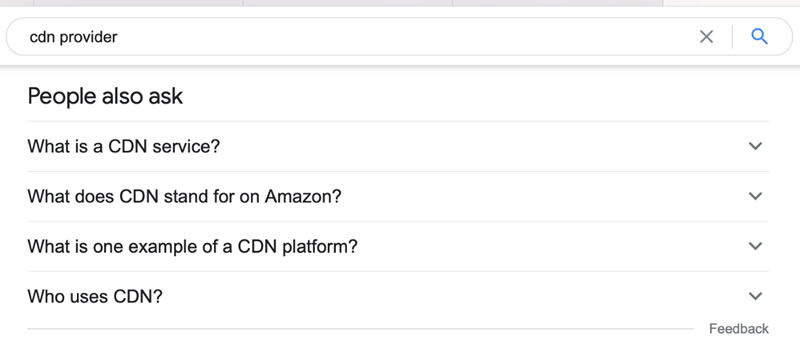
Every year, the same question pops up: Is SEO still a good investment?
And, every year, the answer is the same: Yes!
In fact, according to research by BrightEdge, in 2021, SEO is more important than ever, with 53% of all website traffic coming from organic search (compared to 15% from paid search, 5% from social media, and 27% from other channels).
So, whether you are a small independent business selling homemade cakes, or a multinational corporation, if you have a website, you need an SEO strategy. To help, I have outlined some of the key elements that you should consider when building yours.
1. Define your audience and their needs
The first step in your SEO strategy should be to identify your target audience and their intentions. In order to create great content, you need to know who you are creating it for, so aim to answer the following questions:
- What will your audience be searching for?
- What are their pain points?
- What type of content will you provide to answer their needs?
By answering these questions, you can define a content strategy. This could mean creating “what is” blog posts to satisfy an informational intent, or product or solution pages that highlight benefits and selling points, or detailed guides that show you as an industry expert.
Please note that this needs to happen on an international/multilingual level, if your website will serve different international audiences either now or in the future.
2. Define the best international structure for your website
If you plan to or already do operate in different countries and serve content in different languages, it is important to define an international SEO strategy at the early stages. You should do this to make sure you architect the website in a way that is scalable, i.e. there is a plan for adding more country/language websites with the right geo-targeting in place.
Things that you will want to consider are:
- URL structures: You will need to decide if you want to localise URLs or keep them in one language with the country code. In general, it is recommended to localise URLs where possible so that you can use keywords in the local language. However, it can be easier to manage multiple language websites by keeping the URLs the same and using language codes, e.g. www.website.com/de/webpage. You should decide this based on your scale and SEO team’s language capabilities.
- Hreflang: A hreflang attribute is the code that tells Google which language you are using on a specific page, so the search engine can show that result to users searching in that language. It is important that you include hreflang in the head of your HTML and include it on every page that you want to target to a specific country and language. Hreflang is especially useful when you have content for both Spanish-Spain and Spanish-Mexico audiences, or English-US and English-UK. You do not want to cannibalise your own content, so a good hreflang implementation should not be overlooked.
3. Identify your priority keywords and pages
As part of your strategy, you should identify the top keywords per topic, and track how your pages rank for them. Your goal will be to improve your target pages’ rankings for the specific search terms.
It can make sense to categorise your search terms into:
- Priority 1: Competitive, high volume keywords that you want top pages to rank on page one.
- Priority 2: Product/solution-specific keywords that you can rank relevant content for and where you can maintain a healthy ranking position.
- Priority 3: Low-hanging fruit, i.e. longer tail keywords with lower search volumes and less competition, but where you can easily rank on page one with a few small optimisations.
There are plenty of free tools to do this like Google’s Keyword Planner, or paid SEO tools like SEMrush or Ahrefs.
4. Research your competition and learn from them
Ideally, you should already know who your main competition is in your target market. But when it comes to SEO, you should also know who your competition is in the search engine results page. That means who is ranking higher than you in Google for some of your key search queries.
The easiest way to find this out is to type into Google some of your target search terms. Look at how you rank and then see who appears above you. Then, go on to their page and try to understand why they are ranking so well. Is their meta content clear and user friendly? Does their website have a simple navigation? Do they use structured data? By taking a bit of time to look at what your competitors are doing, you could learn some good lessons to try on your own website.
5. Plan your content around entities
Most SEOs know that the one-keyword-per-page strategy is outdated. In 2021, your content should be based around entities. Google defines an entity as: “a thing or concept that is singular, unique, well-defined and distinguishable.” But, unlike a keyword, it is the relationship between multiple entities on a page that is important here.
For example, if you are creating a new product page, as well as doing keyword research, you should also check what entities are related to your main topic and make sure to include those in the text. This will signal to Google what the page is about and how Google should understand it.
A great way to find related entities is to check the “People also ask” section in Google.

You could also look at the suggested searches in Google images.

Google’s natural language processing model BERT is now capable of understanding paragraphs of text and words related to a topic, so some pages are being ranked in search results without even mentioning the target query. This emphasises the move away from keywords alone, and towards entities and topics.
6. Check your Core Web Vitals
In early 2020, Google announced that Core Web Vitals would be a ranking factor from May 2021 (this was later pushed back to June 2021). Google rarely gives digital marketers a year’s heads up on an algorithm change, so this signals that it is a pretty important one.
Google’s Core Web Vitals are a subset of signals that are essential to delivering great user experience on a webpage. Each of the Core Web Vitals represents a facet of user experience and can be measured using developer tools like Lighthouse, PageSpeed Insights and Google Search Console.
There are three main elements to optimise for, which cover page speed, responsiveness and visual stability:
- Largest Contentful Paint: This is the time a page’s main content takes to load. An ideal measurement is 2.5 seconds or faster.
- First Input Delay: This is how long it takes for a page to become interactive. An ideal measurement is less than 100 ms.
- Cumulative Layout Shift: This is how much content moves around on a page once it has loaded. An ideal measurement is less than 0.1.

7. Think about your backlink profile
You should always consider improving your backlink profile. Your backlink profile is built up by the number and type of external links pointing to your website. The more links you have, the more Google will consider your website trustworthy and relevant, thus ranking it higher in the search engine results page.
Although quantity is good, quality is much more important here, as Google will penalise you if you have potentially toxic domains (think link farms) pointing to your website. Ideally, you want links coming from trusted, authoritative websites, the gold standard being universities, government websites and recognised industry leaders.
You should set up monthly or quarterly backlink monitoring, and disavow any toxic domains in a disavow file in Google Search Console. At the same time, you should develop an outreach programme to get trustworthy sources to share your links. This can be done by reaching out directly to relevant industry blogs or working with influencers.
8. Managing international websites
If you have international websites targeting different markets, you should have a plan for each market and treat them separately. This is important because people’s searching and buying habits will differ depending on where they are in the world. Therefore, your top keywords in one market will not necessarily be the same in another.
We advise to always do fresh keyword research in each target market, preferably by a native speaker. This will ensure you are not missing opportunities across regions and can help you to tailor your content to your audience.
Conclusion
I hope you have found this blog post useful! With the above tips, you should be well on your way to creating a great SEO strategy for 2021, and positive results should follow.
Need some advice or assistance? Get in touch and we can help you out!






